RF Cable Guide: USB, SATA, and Coaxial Cable Explained
July 31,2025
Introduction:
Cables are the unsung heroes connecting our devices and powering our digital world. From hooking up your TV to charging your phone, different cables serve different purposes. In this guide, we’ll explain what an RF cable is and how it’s used, and we’ll also dive into other common cable types – from coax cable for TV and internet to USB cable and SATA cable in computers. Each section answers frequently asked questions, helping you understand the uses, differences, and benefits of these cables.
What is an RF Cable?
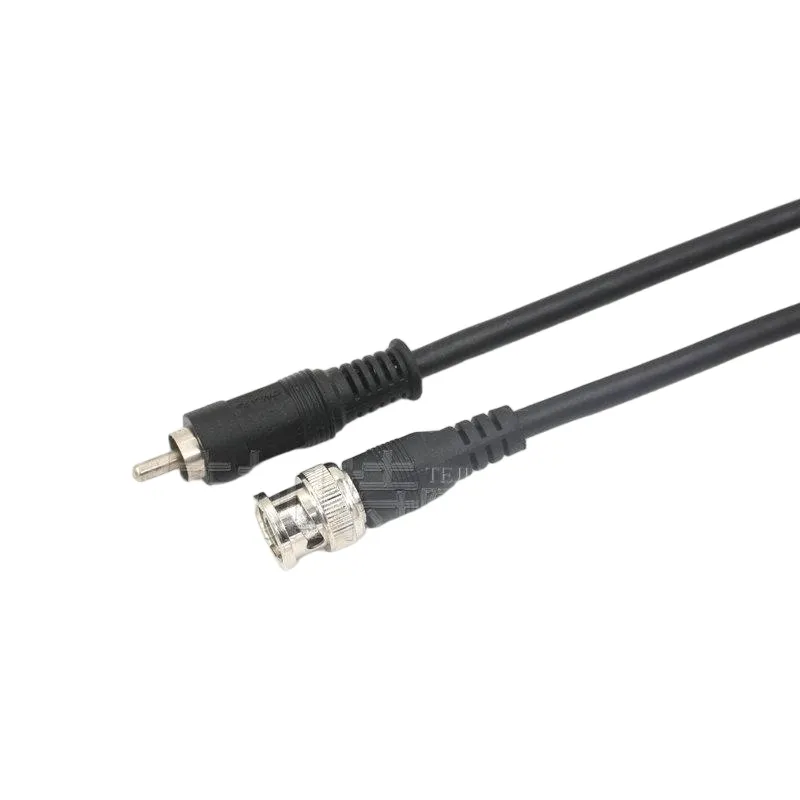
The image displays a real-world setup where RF coaxial cables are used to connect wireless devices, base stations, and communication equipment, highlighting the importance of impedance control and shielding performance.
An RF cable is a cable designed to carry Radio Frequency (RF) signals – essentially, it transmits electromagnetic waves at radio frequencies. In practice, “RF cable” usually refers to a coaxial cable assembly used for TV antennas, cable television, radio transmitters, and other devices that send or receive radio frequency signals. RF cables have a central conductor wire surrounded by an insulating layer and a metallic shield, all encased in a protective jacket. This special layered design maintains a consistent impedance and blocks interference, which is crucial for reliably carrying high-frequency signals. In short, an RF cable enables things like over-the-air TV reception (connecting your antenna to your TV) and broadband cable internet by transmitting high-frequency electrical signals with minimal loss.
RF stands for “Radio Frequency.” So whenever you see an “RF input” on a device – for example, the RF connector on a smart TV – it refers to the coaxial antenna/cable TV input where you attach the incoming TV signal. In a modern smart TV, the RF port is the threaded round coax connector (often labeled “ANT/CABLE In”) used to connect either a rooftop antenna or a cable TV feed. By plugging an RF coax cable into this port, you allow the TV’s internal tuner to receive television signals.
RF Cable vs. Coaxial Cable – Is There a Difference?
Often, the terms “RF cable” and “coax cable” are used interchangeably, because most cables for radio frequency signals are coaxial in design. Technically, coaxial describes the cable’s structure: a central conductor and outer shield sharing a common axis. RF describes the signal type (radio frequency) the cable carries. In practice, a coaxial cable is a type of RF cable. For example, the standard TV antenna cable is a 75Ω coaxial RF cable. There’s no hard difference because coaxial cables are the dominant means of transmitting RF signals.
That said, the term “coaxial cable” can refer to any such cable even outside RF applications, and “RF cable” simply emphasizes the cable’s use for high-frequency signal transmission. The key point: if you’re connecting a television, radio, or modem, you’ll be using a coaxial RF cable. The coaxial design is chosen because its geometry and shielding give it a low, well-defined impedance at high frequencies and protect the signal from outside interference. This shielding is a big advantage over “normal” electrical cables – unlike an ordinary wire, a coax cable’s grounded outer shield stops external electromagnetic noise from reaching the center conductor. So, compared to a regular two-wire cable, coax can carry video, data, and other RF signals over longer distances with much less noise or signal loss. In summary, there’s no functional difference to worry about: if someone says “RF cable,” they usually mean a coaxial cable used for radio frequency signals.
Uses of RF Coaxial Cables (TV, Internet, and More)
Coaxial RF cables are widely used anywhere high-frequency signals need to be transmitted. A common use is for television – the cable from your TV antenna or cable TV wall outlet is a coaxial RF cable. This single cable carries all your TV channels as RF signals. Similarly, coax cables connect to cable modems for broadband internet service, transmitting data to and from your ISP over cable lines. If you have satellite TV, the dish on your roof is connected via a coaxial RF cable to the receiver inside. Coax cables are also used in radio communication equipment, CCTV/security camera systems (using BNC connectors), and any application where radio frequency signals (from a few MHz up to many GHz) need to be sent with low loss and interference.
On a smart TV, as mentioned, the “RF In” is typically an F-type coax connector. To watch over-the-air broadcasts, you attach the antenna’s RF coax cable to this port. In older terminology, this was called the “antenna jack” or “coax input.” Even with streaming and HDMI prevalent today, most modern TVs still include this coax RF input for compatibility with antennas and cable service, so yes – RF/coax connections are still used in 2025 and remain very common for TV and internet. In fact, billions of homes use coaxial cables for cable television and internet because the infrastructure is already in place and reliable.
Another question people ask is how RF cables differ from normal cables used for electricity or audio. We touched on this above: coaxial RF cables have a specific construction (insulated center wire + shield) and a characteristic impedance (often 50 Ω or 75 Ω) tailored for high-frequency signal transfer. A “normal” electrical cable (like lamp cord or speaker wire) typically has two parallel conductors and no shielding – fine for low-frequency power or audio, but it would leak signals and pick up noise if used for RF. Coax’s shield prevents it from acting like an antenna and protects the integrity of the RF signal, which is why we use coax for things like TV signals whereas you wouldn’t use plain twin-lead wire for that in modern systems.
Benefits of Coaxial RF Cables
Coaxial cables have stuck around so long in RF applications for good reason. First, their shielded design means they are highly resistant to electromagnetic interference (EMI) – outside noise is shunted to the grounded shield and kept away from the signal-carrying core. This makes coax ideal for delivering clear TV pictures and data without static or errors. Second, coax cables can carry high-frequency signals with relatively low signal loss, especially over short to medium distances. For example, a well-made RF coax cable can run 50 or 100 feet from an antenna to a TV with minimal degradation of the signal. Coax also supports wide bandwidth: a single coax cable can carry a huge range of frequencies (for instance, cable TV and internet share a coax by using different frequency bands for different channels and data).
Another benefit is durability – coax cables, particularly those with thick insulation, are quite durable and can be run through walls or outdoors (with proper weatherproofing) for years. They’re also relatively affordable and easy to install (just screw or plug in the connector). Is coax cable still used? Absolutely. Coax remains a backbone of cable TV and broadband internet distribution. Even with fiber optics becoming more common for long distances, coax is often used within neighborhoods and buildings to distribute signals from a fiber node to individual homes (this is the typical hybrid fiber-coax network of cable companies). Coax’s combination of shielding, bandwidth, and ease of use means it continues to be relevant. Newer technologies (like DOCSIS 3.1 cable internet) push gigabit speeds through ordinary coax cables, underscoring that coax is far from obsolete.
In summary, the key benefits of coaxial RF cables include: shielding against interference, low signal loss, high frequency carrying capacity, and widespread compatibility with TVs, radios, and network equipment. These advantages ensure coax cables remain a trusted solution for transmitting video, audio, and data in our homes and industries.
RF Cable Connectors and Manufacturers
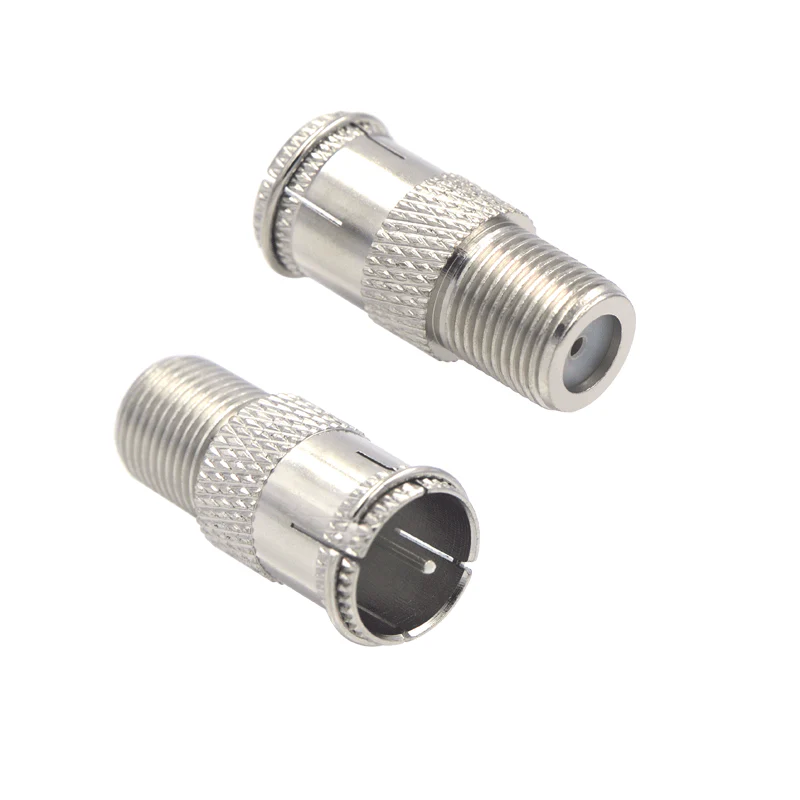
The F-type connector is a cost-effective threaded connector ideal for CATV, satellite TV, and cable modems.
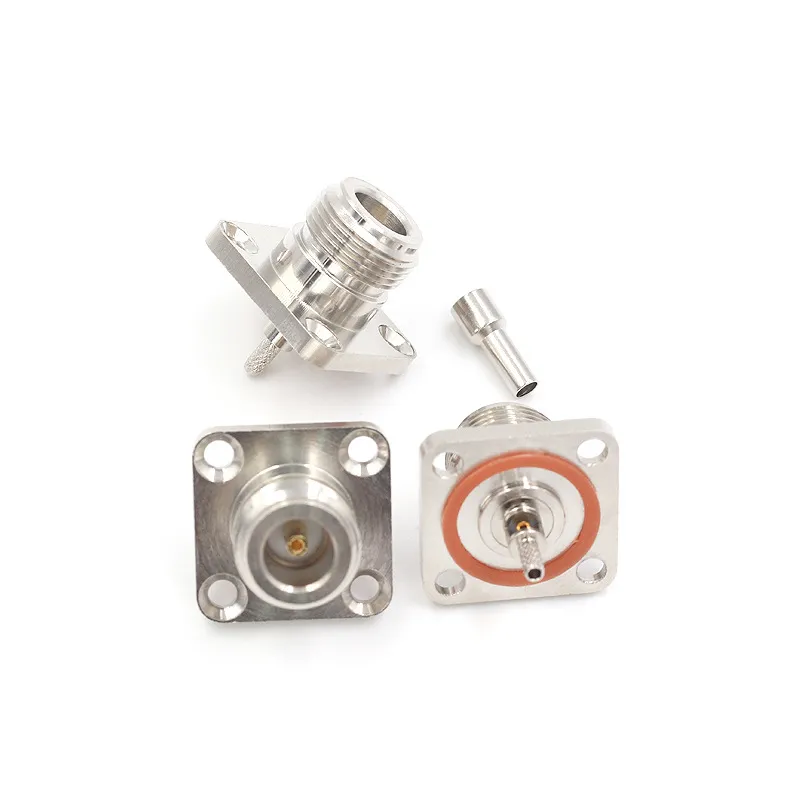
This image shows an N-type connector used in antennas, base stations, and radar systems.
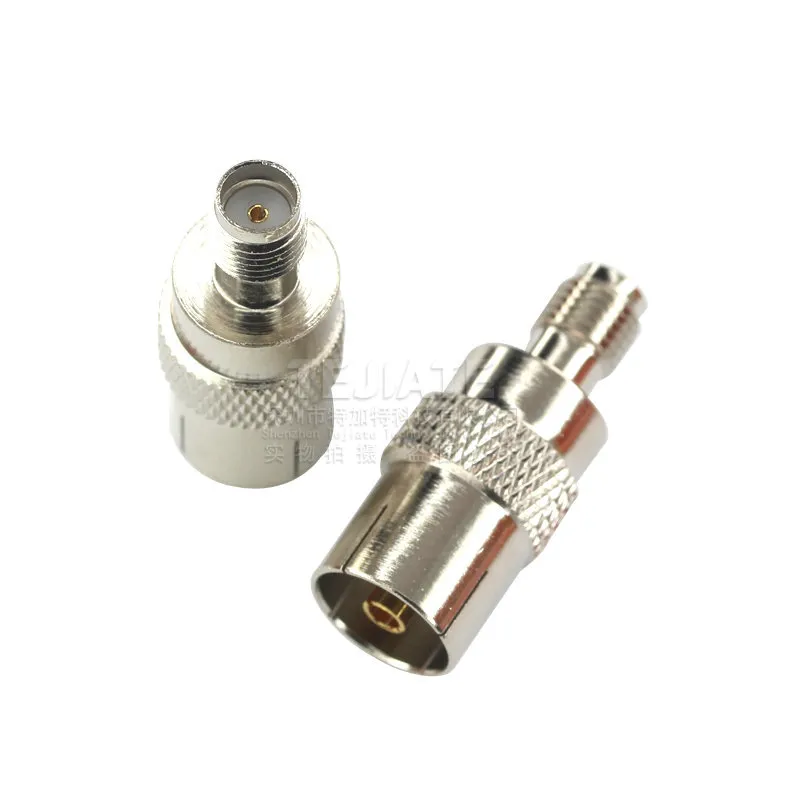
The SMA connector features a threaded lock, suitable for microwave communication and antenna links.
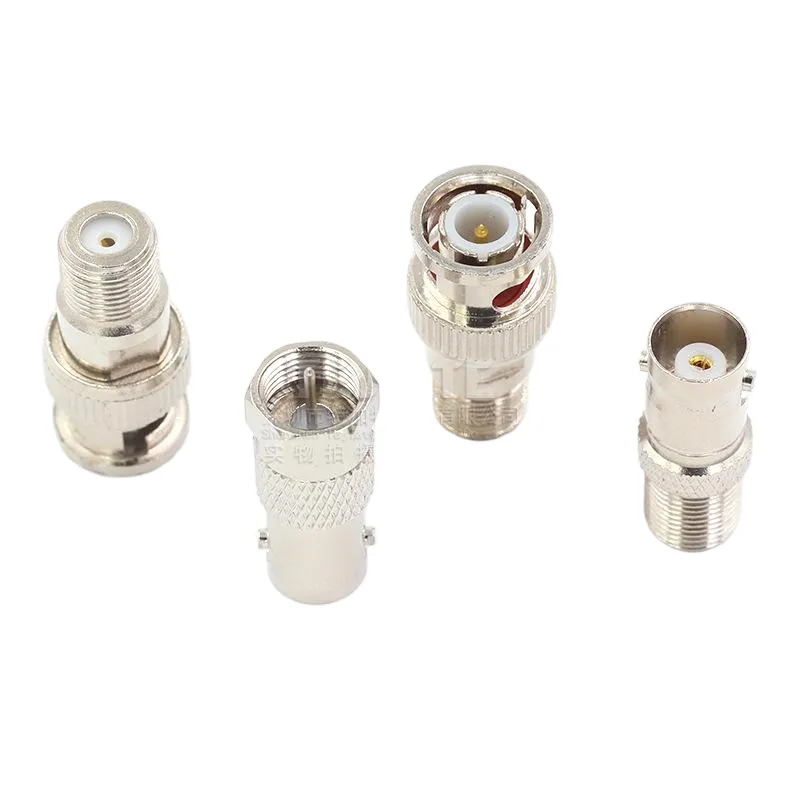
BNC connectors are easy to attach/detach without tools, ideal for labs and CCTV.
To use RF coax cables, you also need the right connectors. There are many types of coaxial RF connectors: the F-type (the threaded connector on TV coax cables), BNC (bayonet-style used in professional video and RF test gear), SMA (a small screw-on connector for antennas, Wi-Fi equipment, etc.), N-type (larger threaded connector for industrial and antenna use), and others. Each connector type is designed to maintain the coaxial structure through the connection and match the cable’s impedance, ensuring a good signal transfer. Some cables come with connectors pre-attached, and in other cases you attach your own connectors by crimping or screwing them on. If you need to go between connector types – say connect an SMA cable to a BNC input – there are RF adapters available. In fact, major manufacturers like Amphenol RF produce a full range of coaxial adapters covering all standard interface types.
There are also high-power RF cables and connectors designed for transmitting strong radio signals (for example, from a radio transmitter to a broadcast antenna). These often have larger diameters and robust connectors to handle higher voltages and currents without excessive heating or signal loss. Unless you’re in ham radio or broadcasting, you might not encounter those, but it’s good to know they exist (e.g., high-power coax cables feed rooftop cellular antennas and TV broadcast antennas). For most consumer needs, standard 50 Ω or 75 Ω coax cables suffice.
When it comes to choosing quality cables, it helps to know some reputable RF cable manufacturers. Brands like Belden and Times Microwave are known for high-grade coaxial cable products. Amphenol, as mentioned, is famed for RF connectors and also makes cable assemblies. TE Connectivity (TE) offers many RF components and cable assemblies as well, focusing on reliable performance for industries like aerospace and defense. For everyday consumers, brands such as Cable Matters and Monoprice provide decent coax cables for home use at affordable prices.
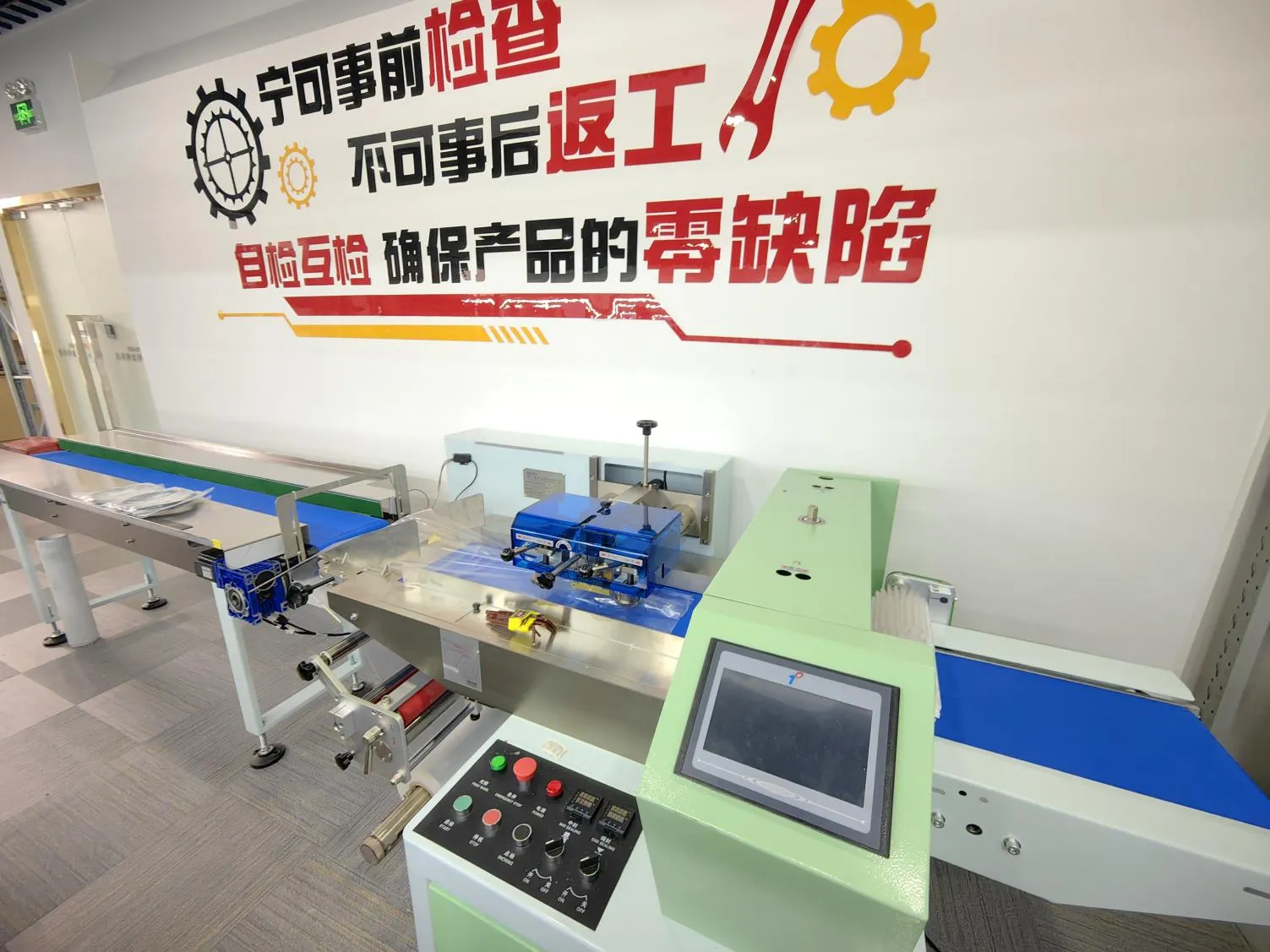
This image represents the rigorous quality control process in RF cable production, including shielding effectiveness testing, impedance measurement, and environmental durability checks to meet industry-grade reliability.
As an example of a specialized manufacturer, TEJTE is an ISO 9001-certified company that produces RF coaxial cables and adapters with a wide variety of connector options. Their RF adapter cable range supports over 12 interface combinations (including common pairs like SMA-BNC, BNC-N, U.FL to SMP, MMCX-SMA, and more) to accommodate different RF systems. High-quality cables from such providers often carry certifications – for instance, an RF adapter cable that has passed CE/FCC dual certification gives assurance of safety and signal quality. These cables aim for “zero latency” and low loss connections, meaning they introduce virtually no delay and minimal attenuation to the signals – important for applications like high-speed communication and precise lab testing. When sourcing cables, looking for reputable makers and certifications can help ensure you get a reliable product.
USB Cables and Their Types
Not all cables deal with radio frequency signals – many are used for carrying data and power at much lower frequencies. A ubiquitous example is the USB cable. USB stands for Universal Serial Bus, a standard for connecting and powering peripherals. What is a USB cable used for? In everyday life, USB cables charge our phones, connect our printers or keyboards to computers, transfer photos from a camera, and much more. They have become the universal solution for linking small devices. A USB cable typically has a Type-A plug on one end (the flat rectangular connector that goes into your computer or charger) and some form of Type-B or other plug on the device end.
What are the four types of USB cords? Traditionally, the four main types of USB connectors often cited are USB Type A, USB Type B, Mini-USB, and Micro-USB. (These refer to the shape of the connector.) Let’s break them down:
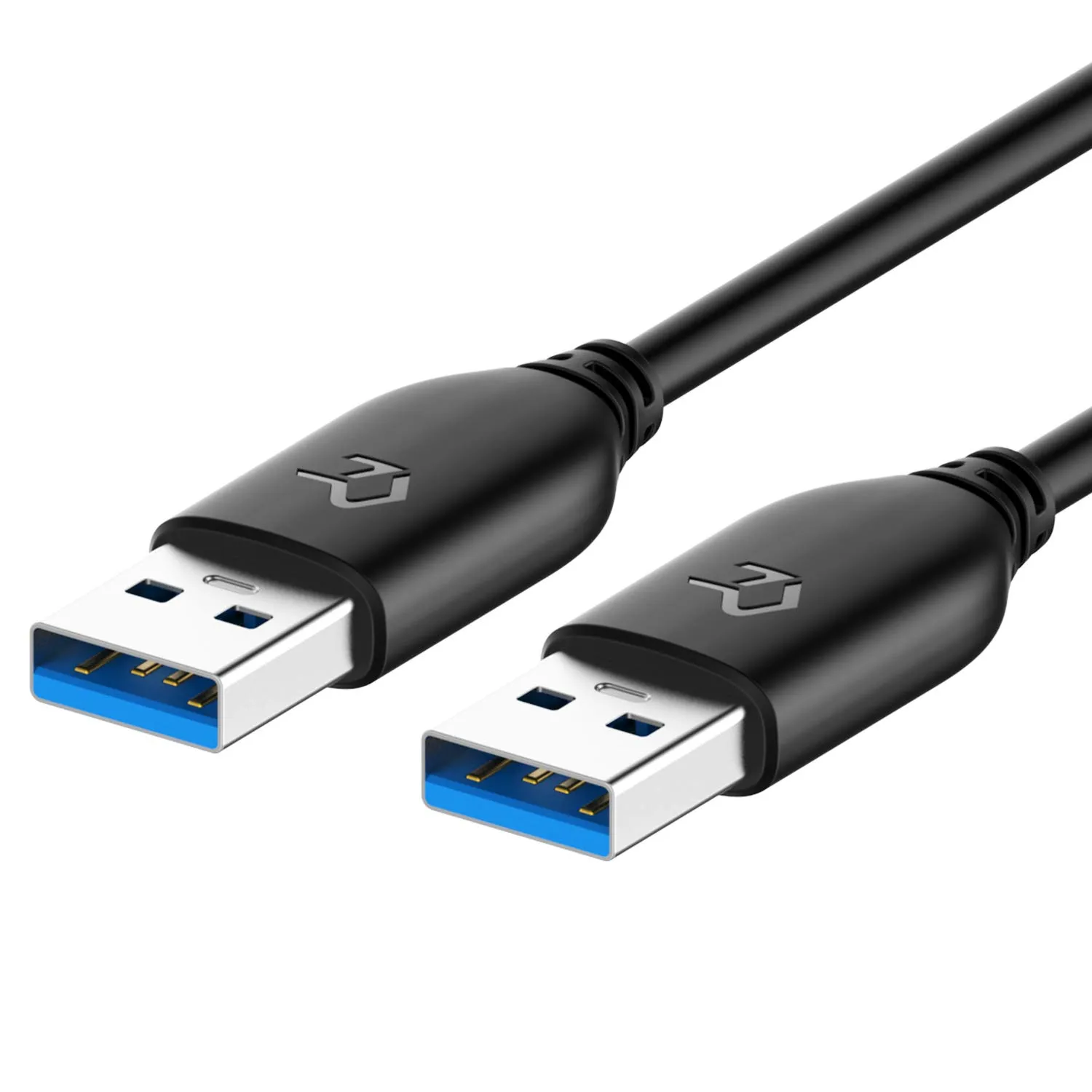
Description (EN): USB-A is a universal port used in PCs, TVs, and chargers for data and power.
- USB Type-A: This is the classic flat rectangular USB plug (about 1.4 cm wide) that you find on almost every PC and laptop, and on one end of most USB cables. USB-A is used for the host side of connections – computers, wall chargers, game consoles, etc. For example, the ports on your computer or the charging bricks for phones are usually USB Type-A ports. You plug the Type-A end of a cable in there. USB-A ports supply power and communicate with devices like flash drives, mice, or phones. (Fun fact: USB-A connectors are not reversible – you have to plug them in the right way up, which has frustrated many users over the years!)
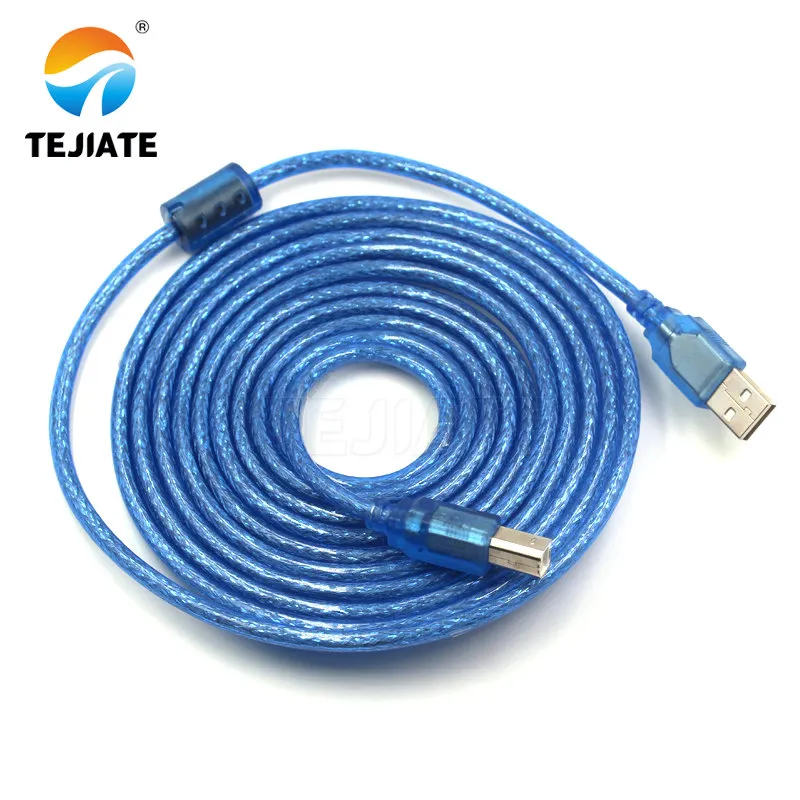
USB-B is mainly for device-side data input in printers and external hardware.
- USB Type-B: This is a squarish connector (roughly 1 cm square with a beveled top) that was commonly used on the device side for printers, scanners, and some larger external hard drives. You might have seen a USB-B plug on a printer cable. Type-B is not as common on newer devices now (many printers have moved to smaller connectors or even wireless), but it’s still a standard for some equipment. There are also variants like USB Mini-B and Micro-B which we cover next.
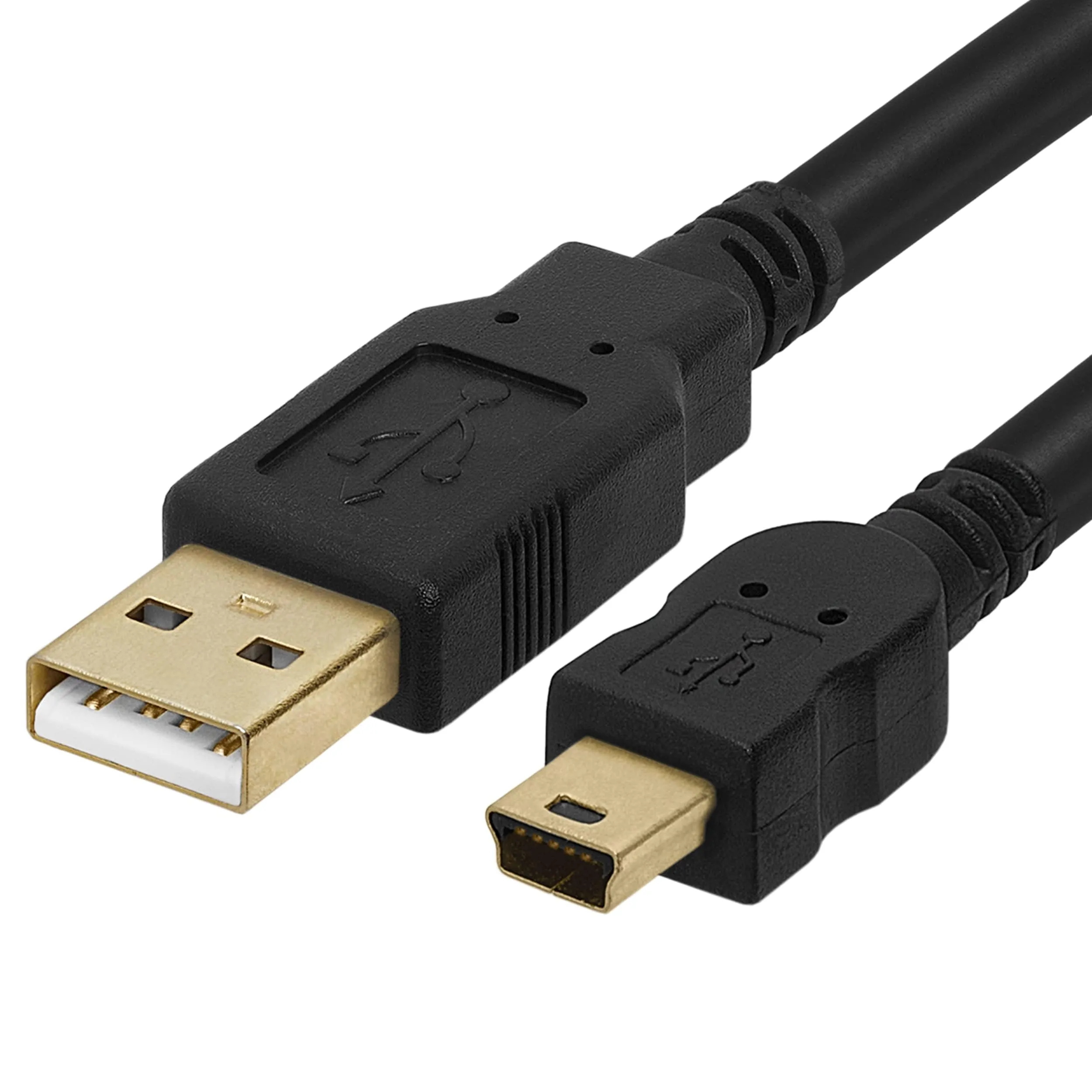
Mini USB was widely used before Micro USB, mostly in cameras and MP3 players.
- USB Mini-USB: Often called Mini-USB, this was a smaller connector introduced for portable devices like digital cameras, MP3 players, and older external drives. The Mini-B connector is about two-thirds the width of USB-A. It was widely used in the mid-2000s, but has largely been phased out. For instance, the PlayStation 3 controllers and early Amazon Kindles used Mini-USB ports for charging. Today, you won’t see Mini-USB much in new products, but you might still own gadgets that use it.
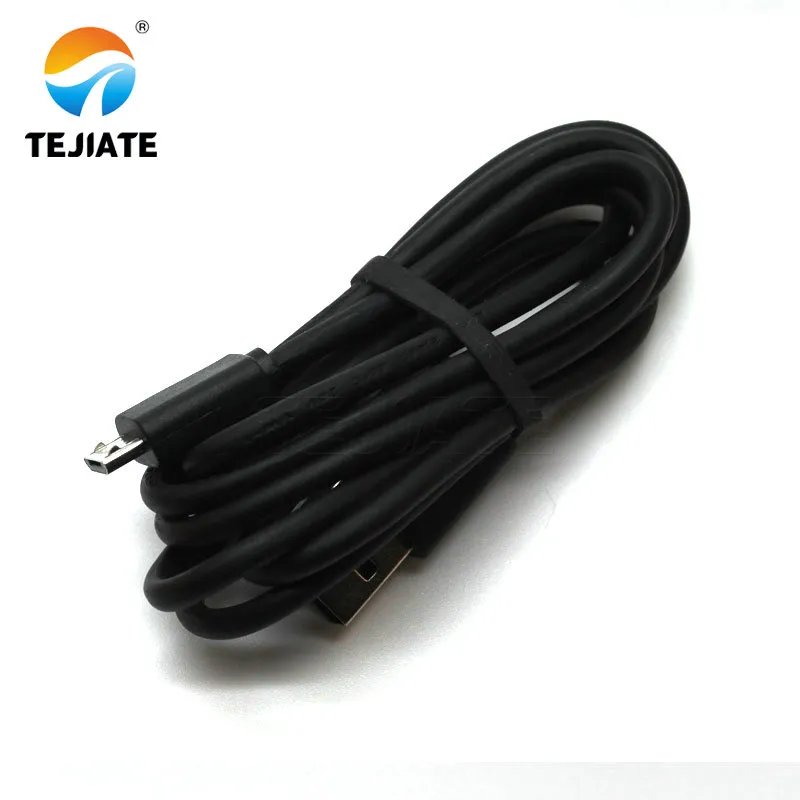
Micro USB offers compact size and secure connection, now replaced by USB-C.
- USB Micro-USB: The Micro USB cable was the next shrink of the connector, designed for smartphones and tablets. Micro-USB (specifically Micro-B) connectors are about 6.8 mm wide, with a flat, trapezoidal shape. For many years, Micro-USB was the standard charging/data port on Android phones, Bluetooth headsets, e-readers, power banks – basically almost everything portable. A Micro USB cable is used for both charging and data transfer on such devices. It has a small Micro-B plug on one end (for the device) and usually a Type-A on the other end (for the charger or computer). Micro-USB was ubiquitous until recently, but now it’s being replaced by USB-C on most new devices.
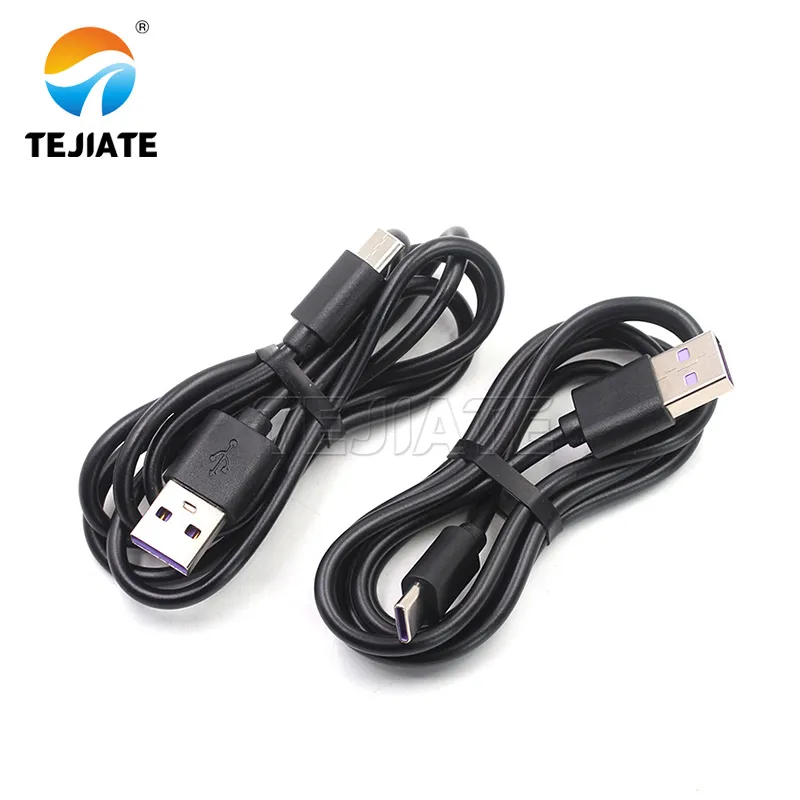
USB-C supports fast charging and high-speed data, replacing Micro USB.
USB Type-C: This is the modern USB connector that is reversible (no more flipping the plug) and capable of very high speeds and power delivery. USB-C has a slim oval shape, about 8.3 mm x 2.5 mm. It is now standard on new Android phones, many laptops (like MacBooks and Ultrabooks), and even devices like the Nintendo Switch. Is Micro USB the same as USB-C? No – Micro-USB and USB-C are different physically and functionally. USB-C has 24 pins and supports features like USB 3.1/3.2 data rates, Power Delivery for fast charging, and alternate modes (you can output video via USB-C, etc.), whereas Micro-USB has fewer pins and lower capabilities. They are not directly compatible; you can’t plug a Micro-USB cable into a USB-C port or vice versa without an adapter. Are Micro USB cables still used? Yes, but mostly for older devices. As of 2025, most newly released gadgets have shifted to USB-C, but millions of devices in use (from cheap earbuds and budget phones to older electronics) still rely on Micro-USB cables. So you likely have a few Micro-USB cables around for those, even as USB-C takes over.
What is a USB cable used for? In summary, USB cables are used for data transfer and power supply between devices. For example, when you connect your phone to your computer with a USB cable, it can both charge the phone and let you transfer files. USB cables connect external hard drives, printers, cameras, keyboards, game controllers – virtually any peripheral – to computers or chargers. The versatility of USB comes from its universal standard and plug-and-play design.
You might also wonder, what is the difference between a “USB cable” and a “Micro USB cable”? The term “USB cable” is very general – it refers to any cable that uses USB connectors (Type-A, Type-B, Type-C, etc.). A “Micro USB cable” is simply a USB cable where one end is the smaller Micro-USB connector. In other words, Micro USB cable is a subset of USB cable. If someone says “bring a USB cable,” they usually mean any appropriate USB cable, possibly assuming a Type-A to whatever. If they specifically say “Micro USB cable,” they mean the one that fits a Micro-USB device. With the variety of connectors today, it’s always best to specify which type you need (Micro-USB, USB-C, Lightning (for iPhones), etc.), but all of these are types of USB cables (except Lightning, which is Apple’s proprietary connector).
To answer another specific question: What is USB-A used for? USB Type-A is used as the standard downstream connector from hosts. That means on computers, laptops, gaming consoles, car stereos – any host device that provides USB connectivity – you’ll typically find Type-A ports. Those ports accept a Type-A plug from a cable. So USB-A is used for connecting peripherals like flash drives, mice, or charging cables into the host. When you plug a flash drive into your PC, that flash drive has a USB-A male connector that goes into the PC’s USB-A female port. In charging, the USB-A end of a cable plugs into the power adapter (the cube), and the other end (Micro-USB, USB-C, etc.) goes into your device. USB-A is simply the most common connector on the host/power side of cables and will likely remain in use for years due to the huge installed base, even as USB-C gradually replaces it on newer hosts.
(In recent years, we also have USB-C to USB-C cables where both ends are Type-C. These are common now for phone chargers and new laptops. But for the purpose of covering “four types of USB cords,” we focused on the classic ones. The bottom line: USB cables come in various connector types, but they all serve to connect and power devices. When picking a USB cable, match the connector types to your devices (A, B, Micro, C, etc.) and ensure the cable supports the needed USB version for your data speed or charging needs.)
SATA Cables in Computers (Data and Power)
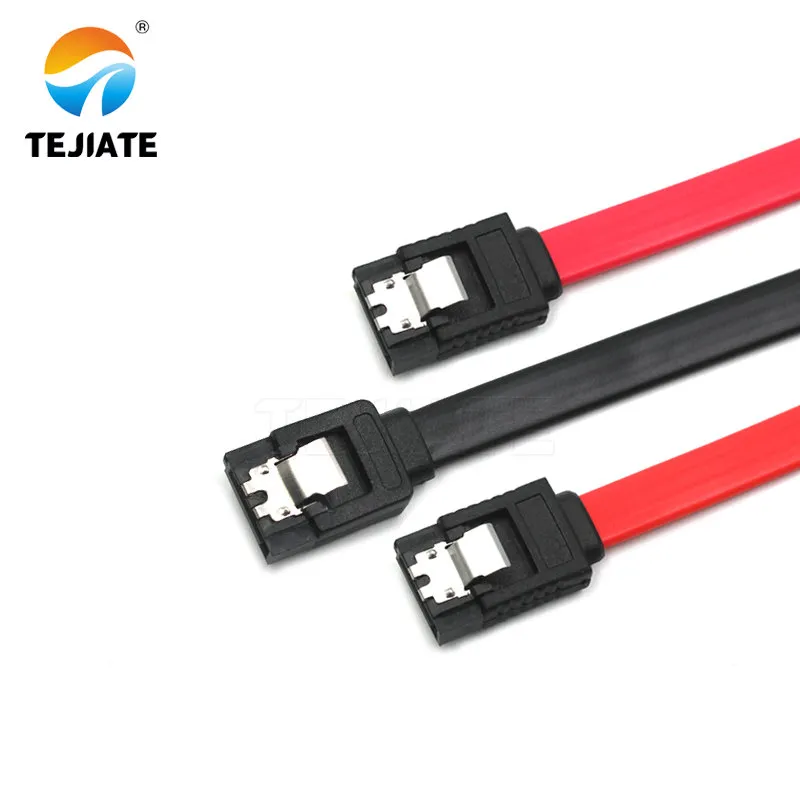
SATA cables connect HDD/SSD to motherboard with up to 6Gbps speed.
Moving into the computer’s insides, another important cable type is the SATA cable. SATA stands for Serial ATA (Advanced Technology Attachment) – it is an interface standard used to connect storage devices like hard drives, solid-state drives (SSDs), and optical drives (DVD/Blu-ray) to the computer’s motherboard. What is SATA in a computer? It is essentially the modern method by which your motherboard communicates with your storage drives, replacing the older PATA (Parallel ATA) ribbon cables. A SATA cable (specifically, a SATA data cable) is a thin, usually red (sometimes other colors) cable with a small L-shaped connector at each end. This 7-pin cable carries data between the drive and the motherboard at high speeds. For example, a SATA 3.0 cable supports up to 6 Gb/s transfer rates. SATA cables are used only for data; they do not deliver power to the drive.
So, what is a SATA cable for? It’s for connecting storage devices (HDDs, SSDs, CD/DVD drives) to the motherboard to transfer data. If you open a desktop PC, you’ll see at least one SATA data cable running from the motherboard’s SATA port to each drive. In addition to the data cable, each drive also needs a SATA power cable from the power supply unit (PSU). The SATA power cable is typically a multi-wire cable with a wider 15-pin connector that also has an L-shape. This delivers power (5V, 12V, etc.) to the drive. In most cases, when someone just says “SATA cable,” they mean the SATA data cable, since the power is part of the PSU wiring. But it’s good to know there are two cables involved in hooking up a drive: data and power.
Are SATA cables only for hard drives? Essentially, yes – SATA is used for drives (whether spinning hard disk drives or solid-state drives or DVD drives). You won’t use a SATA cable for other types of devices like printers or monitors; it’s specific to internal storage and certain internal peripherals. In a standard PC, the SATA ports on the motherboard are intended for storage drives. Enterprise servers sometimes use SATA or the related SAS cables for drives, but again those are all storage. So we can say SATA cables’ sole purpose is connecting storage devices inside computers.
One point to clarify: SATA cables inside a PC are for data. The question often arises because some might think of external cables. There used to be an eSATA (external SATA) connector for connecting external drives, but it never became very popular compared to USB. Nowadays, rather than an “eSATA cable,” people use SATA-to-USB adapters or docks. What is the use of a SATA to USB cable? This refers to a cable or adapter that on one end has a SATA connector (to plug into a bare drive) and on the other end a USB plug (to connect to a PC). It effectively allows an internal drive to be used externally via USB. For example, if you remove a hard drive from a laptop and want to quickly get data off it, you can use a SATA-to-USB adapter cable: connect the SATA end to the drive, and plug the USB end into another computer. The adapter will bridge the SATA interface to USB, and the drive will show up like an external USB drive. This is extremely handy for data recovery, drive cloning, or repurposing old drives as external storage. So, the SATA USB cable isn’t a cable you use inside a PC; it’s a tool to connect a SATA drive externally through a USB port. Many tech folks keep one in their toolkit.
To summarize SATA cables: inside a computer, a SATA data cable connects a storage device to the motherboard for data transfer, and a SATA power cable from the PSU supplies power to that device. SATA cables are only used for drives (HDD/SSD/optical) – you won’t use them for anything else. And if you need to attach a drive outside the PC, you’ll likely use a SATA-to-USB converter or dock rather than an actual long SATA cable (since motherboards don’t typically expose SATA ports externally).
Different Categories of Cables (FAQs)
We’ve covered RF/coax cables, USB cables, and SATA cables in detail. To put things in perspective, let’s address some broader questions about cable types:
Q: What are the 4 types of cable?
A: People categorize cables in different ways depending on context. One common classification for communication and electrical cables lists four main types: coaxial cables, twisted pair cables, fiber optic cables, and power cables.
- Coaxial cables are used for video and data signals (RF applications like TV, internet) over moderate distances.
- Twisted pair cables (e.g., Ethernet cables used in networks, or telephone cables) consist of wire pairs twisted together to reduce interference. They’re great for local networks and phone lines.
- Fiber optic cables use glass fibers and light to transmit data at extremely high speeds, ideal for long-distance communication with minimal loss.
- Power cables are designed to carry electrical power to devices and machinery. They often have thicker conductors and insulation for safety and can handle high voltages/current.
This “four types” grouping covers the major categories one would encounter in office or home cabling infrastructure. (In other contexts, someone might list four different types; for example, an IT technician might say USB, HDMI, Ethernet, and power cords are four common cable types around a computer. But the coax/twisted pair/fiber/power grouping is a standard broad classification.)
Q: What are the three main cables?
A: This likely refers to the three main types of communication cables: coaxial, twisted pair, and fiber optic. These three form the basis of most data transmission systems. Coax was widely used for older Ethernet networks and is still used for cable internet/TV. Twisted pair (like Cat5e/Cat6 Ethernet cables) is now the staple for local area networks. Fiber optic is used for backbone connections and high-speed links. If we talk about electrical wiring, one might humorously say “live, neutral, ground” are the three main wires in an AC power cable – but in the context of cable types, it’s usually the communications cables being referenced. So, the three main cable types: coax, twisted pair, fiber cover most of our data and telecom needs. Everything from your cable TV (coax) to your office Ethernet (twisted pair) to the internet backbone (fiber) uses those.
Q: What are the 5 types of electrical cables?
A: In electrical engineering, “electrical cable” can mean any cable that conducts electricity, so there are many types. A list of five might include, for example:
- Non-Metallic Sheathed Cable (NM) – the common insulated cable used in home wiring (also known as Romex), containing multiple conductors for power circuits.
- Armored Cable (AC or BX) – a power cable with a metal protective jacket, used in commercial buildings for safety.
- Coaxial Cable – (Yes, coaxial is an electrical cable too) used for RF signal transmission as we discussed.
- Twisted Pair Cable – used for telephone and network connections (electrical signals for communication).
- Fiber Optic Cable – which carries data as light (not electrical, but often included when listing cable types for communications).
If we strictly stick to electrical power cables, we could list: NM cable, UF (underground feeder) cable for outdoor burial, THHN wires in conduit, armored cable, and flexible cord (like extension cords). The exact five can vary, but the point is there are various cable types each suited to specific electrical or environmental needs. In the context of our discussion, since we’ve covered coax, twisted pair, etc., we have indirectly touched on at least five types of cables.
Q: What are the types of computer cables?
A: Computers use a variety of cables to function, both internally and externally. Important types of computer cables include:
- Power Cables: Every PC has a power supply cable (the AC cord from the wall to the PSU, and internally cables from the PSU to components). Without power cables, nothing runs.
- Display Cables: To connect monitors we use cables like HDMI, DisplayPort, DVI, or VGA (for older monitors). These carry video (and audio, in the case of HDMI/DP) signals from the computer’s graphics output to the display.
- Networking Cables: Most wired networks use Ethernet cables, which are twisted pair cables (usually with RJ-45 connectors). These connect computers to routers, modems, or switches for internet and LAN access. Ethernet cables (Cat5e, Cat6, etc.) are very common computer cables.
- Peripheral/Data Cables: This category includes USB cables of various types (to connect printers, mice, external drives, cameras, etc.), as well as other interfaces like Thunderbolt or older standards (e.g., FireWire) – but USB has largely unified peripheral connections.
- Internal Cables: Inside the computer, you have data cables like SATA cables connecting drives (as discussed), and other wiring like front panel cables, fan cables, etc. There are also specialized cables like PCI Express power cables for graphics cards, which come from the PSU.
To name a few examples: the cable from your PC’s power supply to the wall outlet, the HDMI cable from your graphics card to your monitor, the USB-C cable that connects an external SSD, the Ethernet cable to your router, and the SATA cable inside hooking up your SSD – all of these are types of computer cables. In short, computers involve power cables, data cables (USB, Thunderbolt, etc.), video cables, audio cables, and internal component cables. Each has its own connectors and specifications, but they all serve to transfer electricity or information between the components that make your system work.
Conclusion
In this comprehensive guide, we’ve explored what an RF cable is and learned that it’s essentially a shielded coax cable crucial for transmitting TV and radio signals with low interference. We’ve compared RF/coax cables to other cable types and answered common questions – from “Is coax still used?” (yes, extensively) to “What does USB do?” (connects and powers our gadgets) to “How do SATA cables work?” (they link your storage drives inside a PC). Each type of cable – coaxial, twisted pair, USB, etc. – has its unique role and benefits.
To recap key points: RF coaxial cables carry broadcast and broadband signals into our homes, leveraging their insulated, shielded design for reliability. Coax cables remain vital for things like cable TV and internet. USB cables (Universal Serial Bus) are the go-to solution for connecting and charging devices; they come in various connector types (like USB-A, USB-C, Micro USB) but all serve to transfer data and power. We clarified that Micro USB vs USB-C are different generations of connectors (with USB-C being the newer, reversible plug with more capabilities). SATA cables work inside computers to connect hard drives and SSDs, enabling fast data transfer between storage and motherboard. They are used only for storage devices, and adapters can bridge them to USB for external use. We also touched on broader cable categories – coax, twisted pair, fiber optic, power – which cover the spectrum of cable technology used in communications and electrical systems.
Understanding these differences helps you choose the right cable for the right job. Using the proper cable ensures optimal performance, whether it’s getting a clear TV signal, high-speed internet, quick data sync, or stable power delivery. For instance, if you tried to use the wrong cable (imagine using regular speaker wire in place of a coax RF cable for an antenna), you’d get very poor results due to mismatched impedance and lack of shielding. Similarly, knowing that a SATA data cable is needed for an internal drive (and not confusing it with, say, a USB cable) is important when upgrading your PC. And if your new phone has USB-C, you’ll know that your old Micro USB cable won’t fit without an adapter – you’ll need a new USB-C cable for it.
In a world full of electronic devices, cables form the critical links – literally. While wireless technologies are on the rise, cables are still everywhere because they offer fast, secure, and power-supplying connections that wireless can’t match in certain scenarios. By being informed about cable types, you can better troubleshoot connection issues, make smart purchases (picking the right cable or adapter), and appreciate the engineering that goes into that simple cord behind your TV or inside your computer. Whether it’s the trusty RF coax cable delivering your favorite TV show or the USB-C cable fast-charging your phone, each cable has a purpose. We hope this guide has demystified the various cables out there and answered your questions. Happy connecting!
Bonfon Office Building, Longgang District, Shenzhen City, Guangdong Province, China

A China-based OEM/ODM RF communications supplier
Table of Contents
Owning your OEM/ODM/Private Label for Electronic Devices andComponents is now easier than ever.
